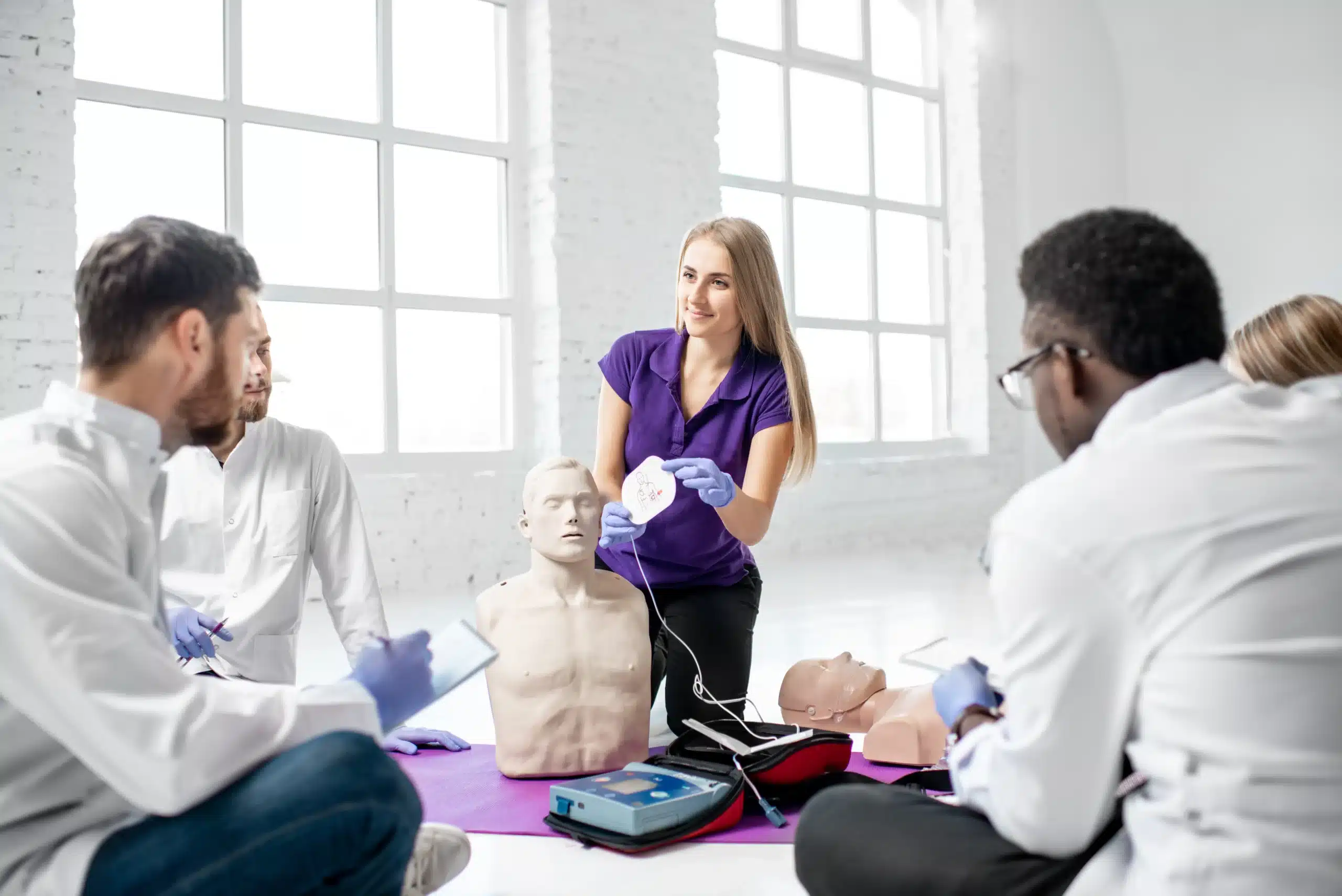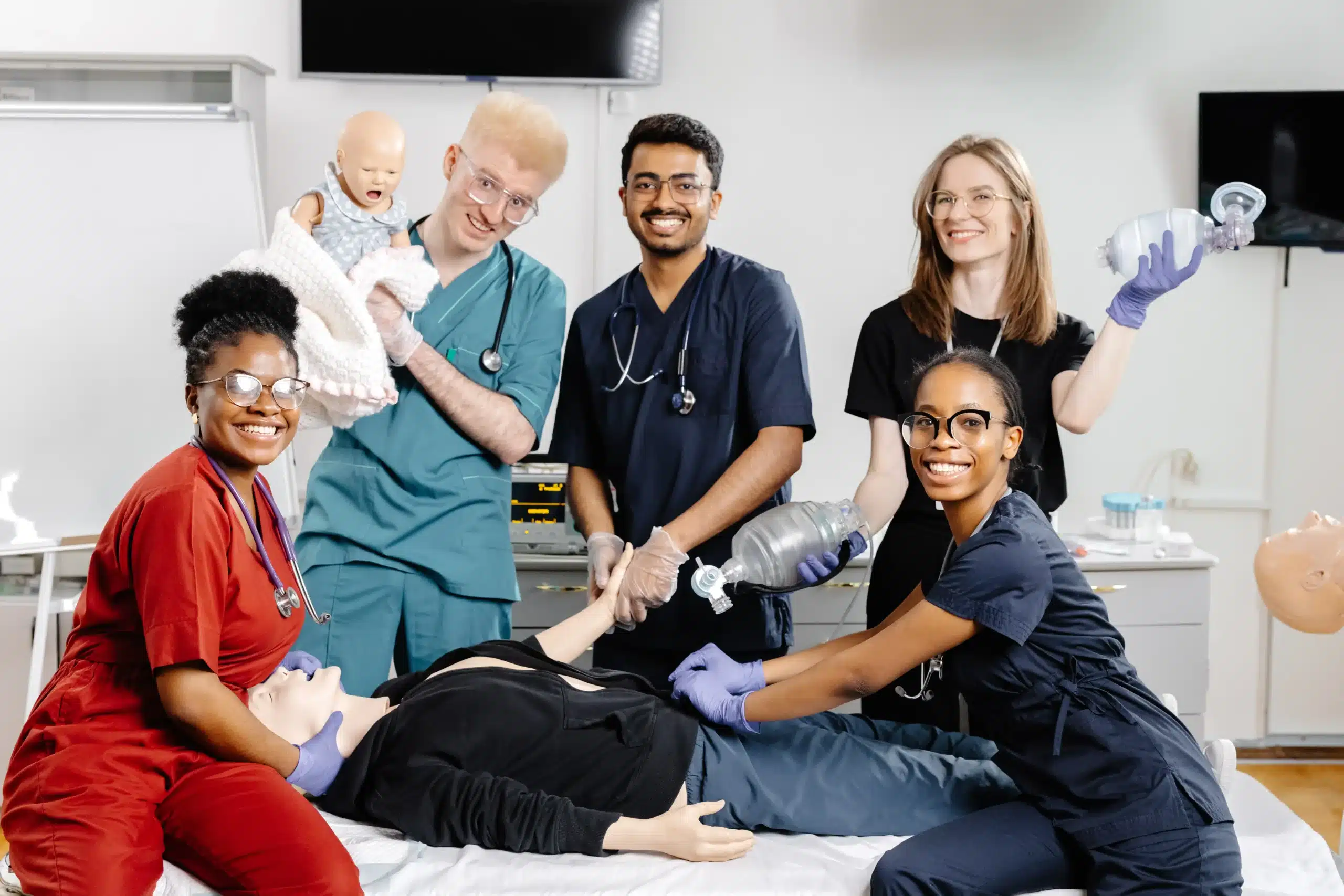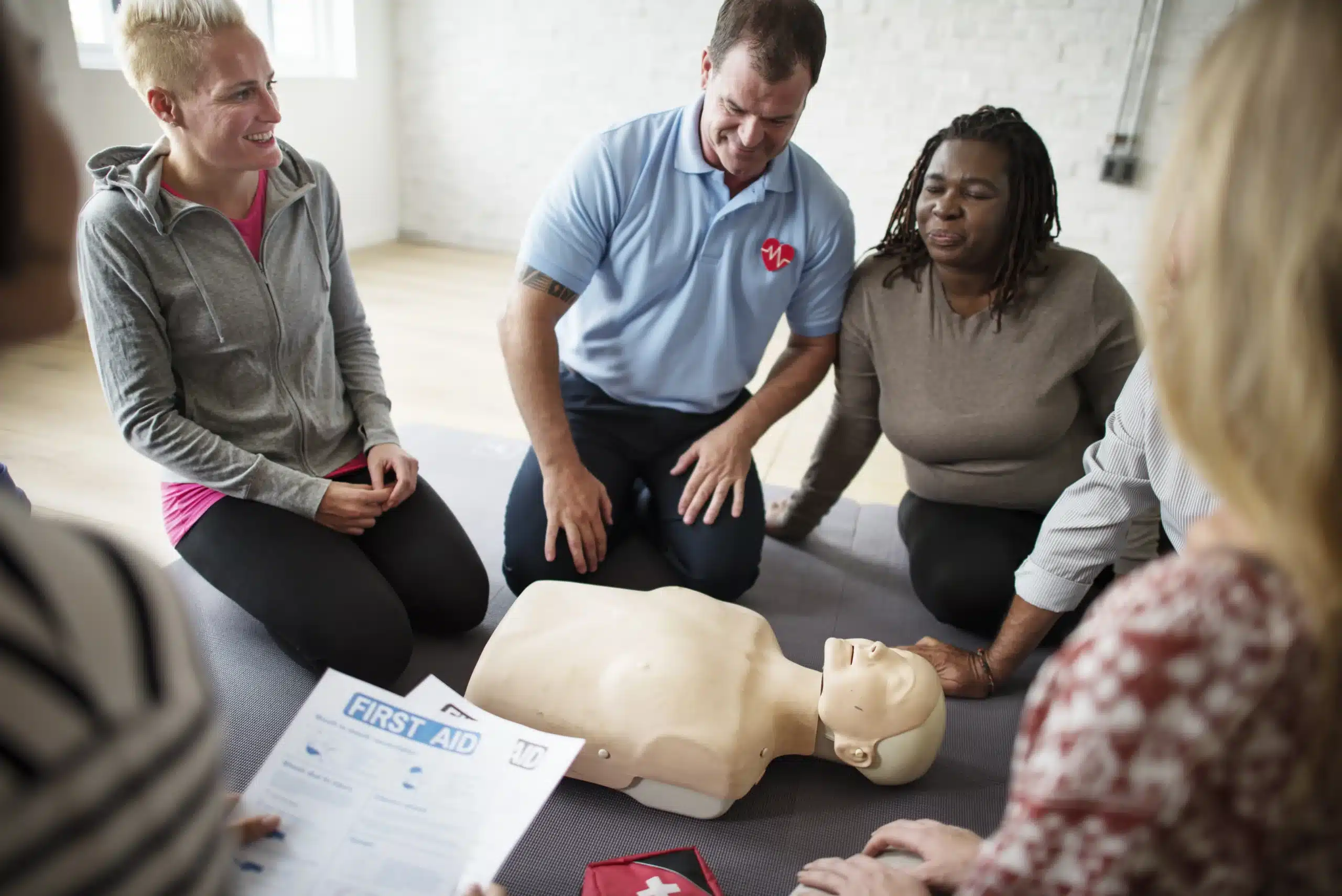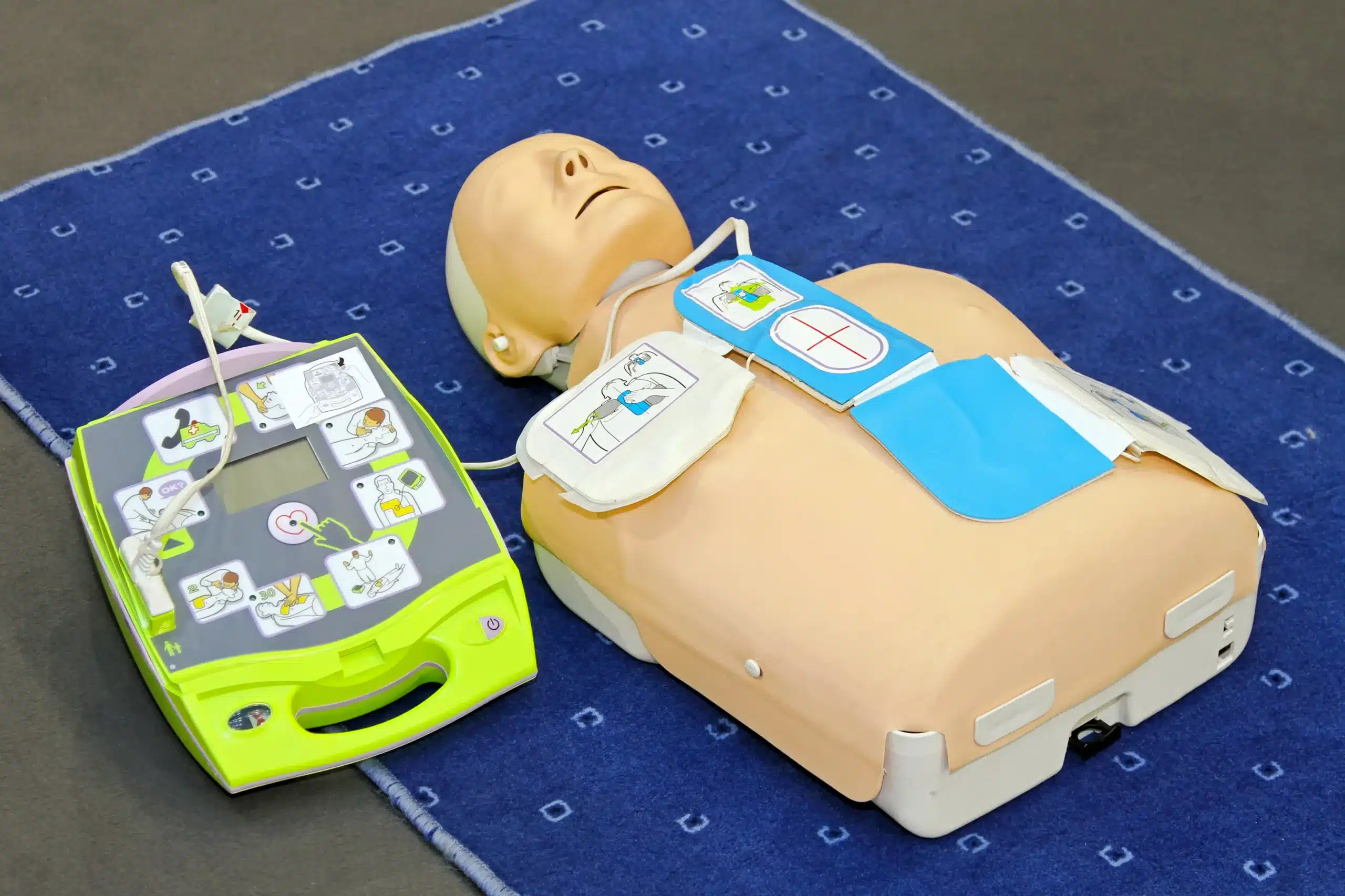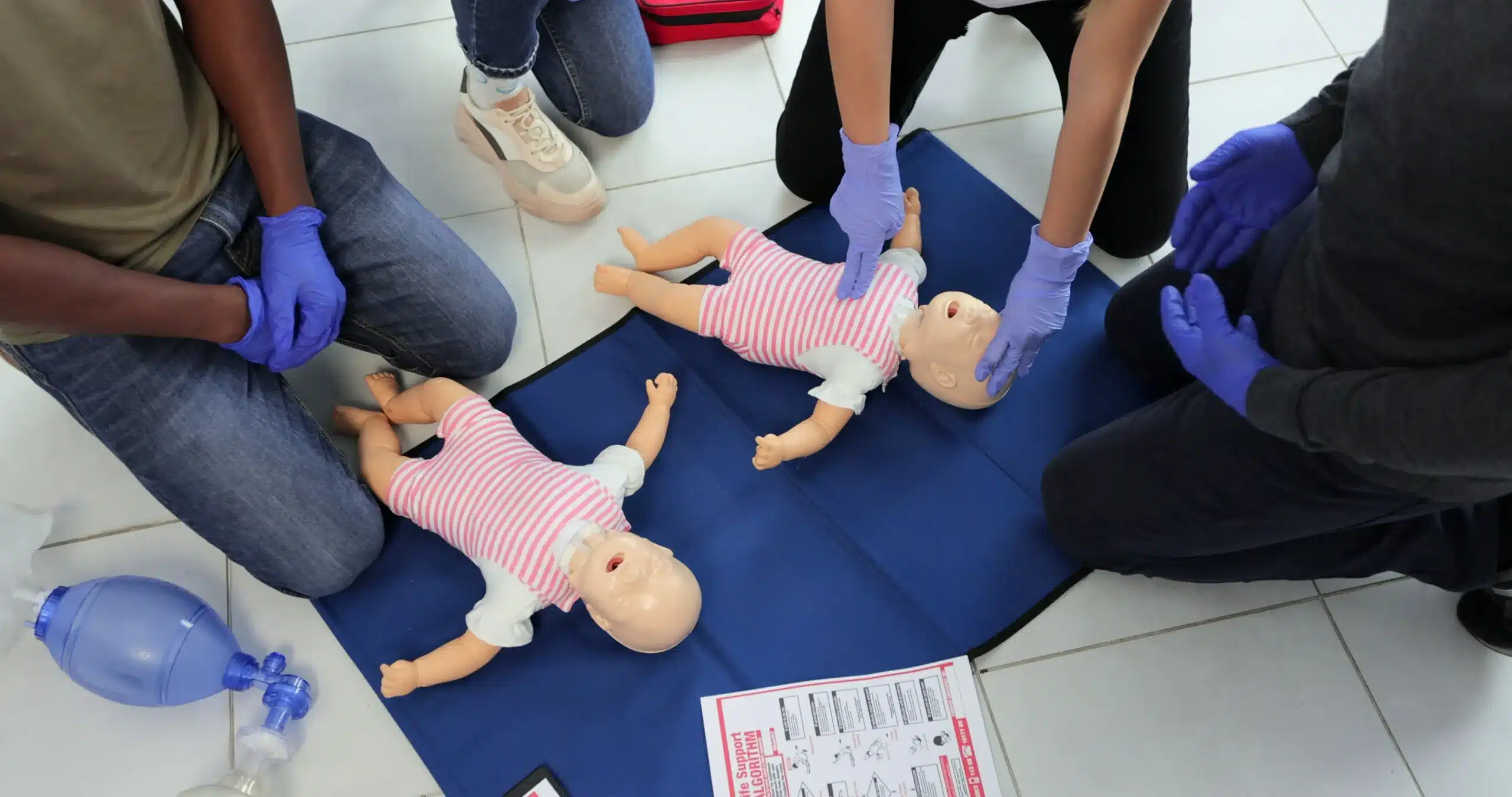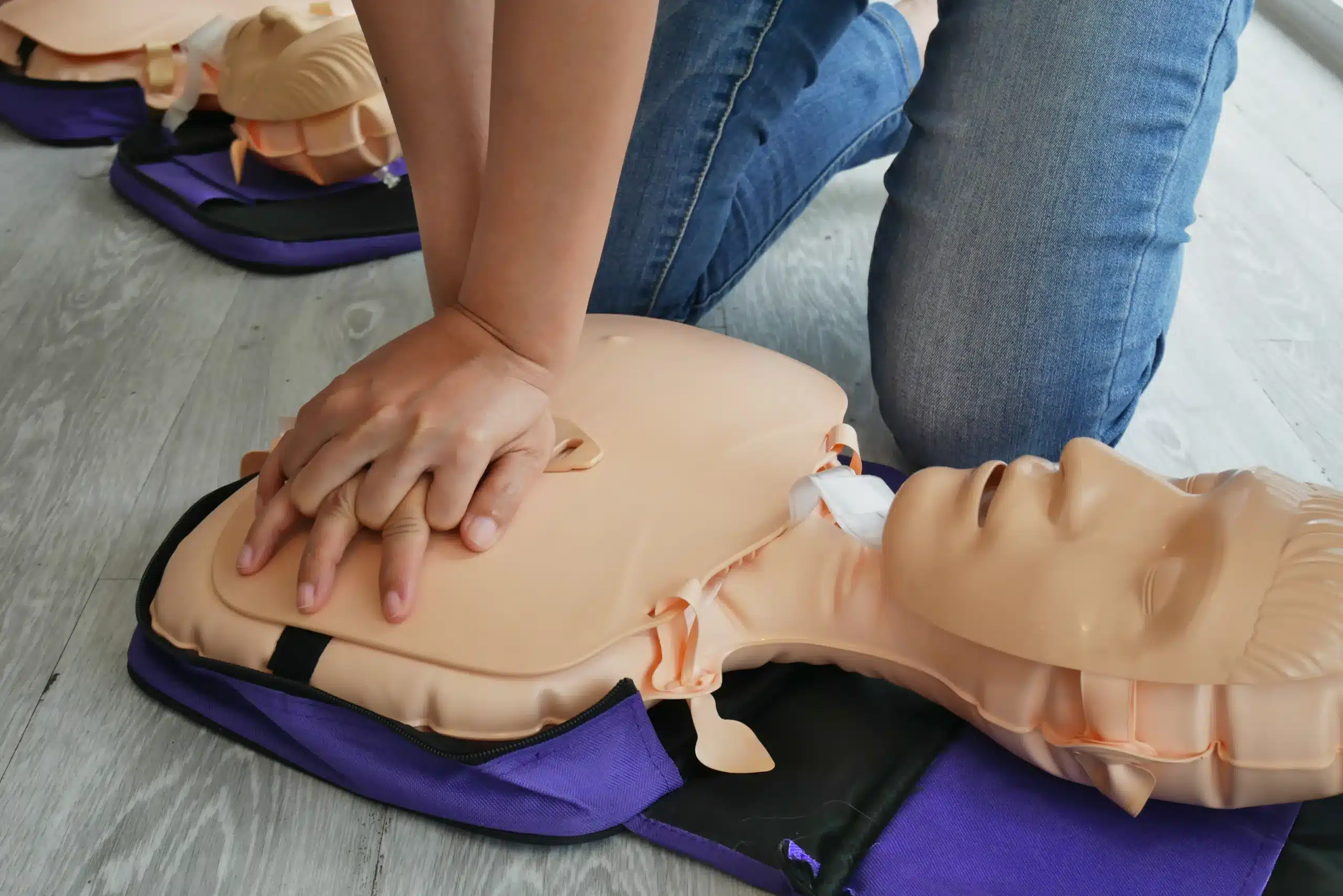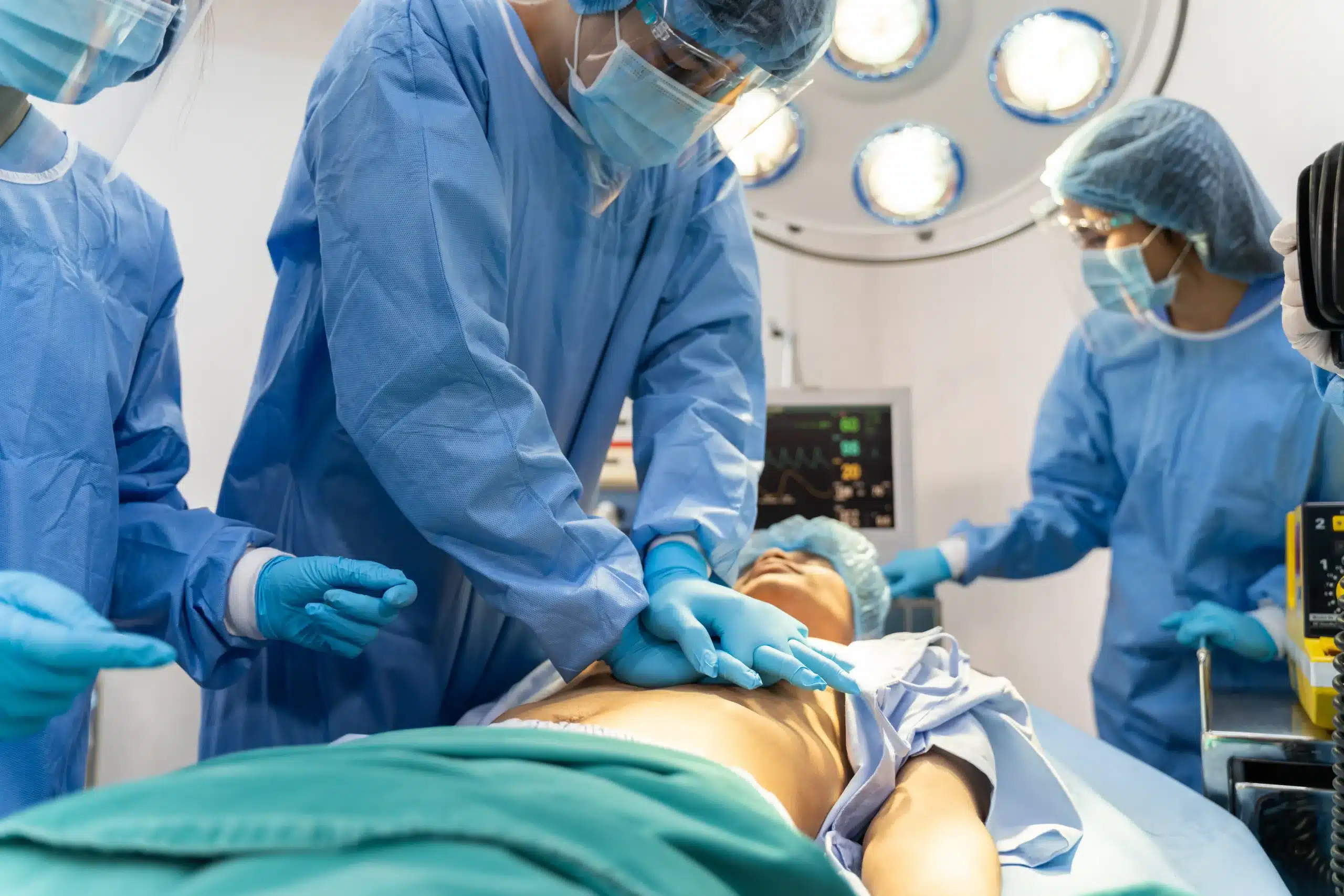Knowing first aid is more than just a good skill to have—it’s an empowering asset that can make a real difference in critical situations. If you’re looking for “first-aid classes near me,” this guide will provide you with a roadmap to finding the right training. We’ll explore various types of first-aid courses, discuss the importance of choosing a reputable provider like Safety Training Seminars, and offer practical tips for preparing for your class. We’ll also debunk common first-aid myths and emphasize the importance of accurate information in emergency situations. Get ready to gain confidence, enhance your professional qualifications, and become a valuable resource in your community.
Key Takeaways
- First aid skills are invaluable: Equipping yourself with first aid knowledge empowers you to confidently manage medical emergencies, big or small, until professional help arrives. This preparedness benefits not only you but also those around you.
- Finding the right course is straightforward: Explore various first-aid courses offered by local providers like Safety Training Seminars, community centers, and well-known organizations like the American Red Cross. Consider your schedule, learning style, and specific needs when selecting a course. Remember to check for free or low-cost options.
- Credibility counts: Opt for a reputable training provider with accredited instructors and a comprehensive curriculum. This ensures your certification is valid and respected, giving you the confidence to act effectively during emergencies.
What Are First-Aid Classes?
First-aid classes teach you how to respond to medical emergencies. These courses cover various topics, from treating minor injuries like cuts and burns to managing more serious situations like choking or a heart attack. Finding the right first-aid training provider is essential. Look for a reputable organization like the American Red Cross, the American Heart Association, or a trusted local provider like Safety Training Seminars, which offers a low price guarantee. A quality provider will offer comprehensive training that meets nationally recognized standards. This ensures you learn accurate and effective life-saving techniques.
Types of First-Aid Training
Several types of first-aid training cater to different needs and skill levels. Basic first-aid courses, sometimes called “Emergency First Aid,” equip you with fundamental skills applicable in various situations. These courses are suitable for anyone, from the workplace to everyday life. More advanced training, like wilderness first aid, focuses on handling medical emergencies in remote locations. Specialized courses also exist for healthcare professionals, childcare providers, and those interested in learning CPR/AED techniques. Safety Training Seminars offers a variety of courses, including BLS, ACLS, and PALS certifications.
Why First-Aid Skills Matter
Knowing first aid can make a real difference in critical situations. It empowers you to act quickly and confidently when someone is injured or becomes ill. Prompt first-aid intervention can stabilize a person’s condition until professional medical help arrives, potentially preventing further complications. These skills are valuable not only for personal preparedness but also for professional development. Many professions, from healthcare and childcare to education, require or recommend first-aid certification. By having these skills, you contribute to a safer community. Understanding the importance of first aid begins with addressing common misconceptions.
Find First-Aid Classes Near You
Finding the right first-aid class shouldn’t feel like searching for a needle in a haystack. Whether you’re in San Francisco, Daly City, San Mateo, or Oakland, there are plenty of resources to help you find a course that fits your needs and schedule.
Search Online
Start your search online. A quick Google search for “first-aid classes near me” will yield numerous results. You can also use online course directories like those offered by the American Red Cross to locate classes based on your location and desired certification. Many training providers, including Safety Training Seminars, list their schedules and course offerings directly on their websites. You can explore available dates and times for BLS, ACLS, and PALS certifications.
Explore Local Resources
Check with your local community centers, libraries, and city government websites. These organizations often host or list information about first-aid and safety training courses in the area. Your local fire department or health department may also offer classes or direct you to reputable providers. For example, the NYC Health Department provides links to various training resources in New York City. While this is a New York-specific resource, many cities offer similar helpful lists.
Reputable Local Providers
Several well-known organizations offer consistent, high-quality first-aid training.
American Red Cross
The American Red Cross is a trusted provider of first-aid, CPR, and other safety training courses. They offer a range of classes to suit different needs, from basic first aid to more advanced certifications.
American Heart Association
The American Heart Association also provides comprehensive first-aid and CPR training programs. Their courses are widely recognized and accepted.
Safety Training Seminars
Safety Training Seminars offers a variety of first-aid and CPR training options, including on-site training for businesses in Northern California. You can find their San Francisco location information, along with details about their low price guarantee, on their website.
Local Hospitals and Community Centers
Many local hospitals and community centers offer first-aid and CPR classes, often at reduced rates or even free of charge. Contact your nearest hospital or community center to inquire about available training opportunities.
Types of First-Aid Classes
First-aid training equips you with the skills to handle medical emergencies until professional help arrives. Different first-aid courses cater to various needs and skill levels. Understanding these distinctions helps you choose the right training for your circumstances.
Basic First Aid
Basic first-aid courses cover essential life-saving techniques applicable in everyday situations. You’ll learn how to manage common injuries like cuts, burns, sprains, and fractures. These courses also teach you to recognize and respond to medical emergencies such as choking, allergic reactions, and heart attacks. Basic first aid is valuable for anyone, regardless of profession, providing the confidence to act quickly and effectively in a crisis. At Safety Training Seminars, our basic first-aid course offers practical skills applicable in various settings, from the workplace to the home. We encourage you to explore our course calendar and register for a class today.
CPR and AED Training
CPR (Cardiopulmonary Resuscitation) and AED (Automated External Defibrillator) training focuses on life-threatening cardiac emergencies. You’ll learn how to perform chest compressions, provide rescue breaths, and use an AED to restore a normal heart rhythm. This training is crucial for healthcare professionals, but it’s also highly beneficial for anyone who wants to be prepared for cardiac emergencies. Safety Training Seminars offers comprehensive CPR and AED training that meets OSHA requirements, providing a two-year certification upon successful completion. Our courses are available daily across our locations, making it easy to find a class that fits your schedule. View our upcoming CPR and AED classes to get started.
Specialized First-Aid Courses
Beyond basic and CPR/AED training, specialized first-aid courses cater to specific industries and environments. These courses address unique hazards and provide advanced skills tailored to particular needs. For example, wilderness first aid focuses on managing injuries in remote locations, while pediatric first aid teaches caregivers how to respond to emergencies involving infants and children. Choosing the right provider is crucial for specialized training. Look for a provider like Safety Training Seminars, which offers a wide range of specialized courses and ensures your training aligns with industry best practices and regulatory requirements. Our experienced instructors and comprehensive curriculum provide the expertise and confidence you need to handle specialized first-aid situations. Contact us to learn more about our specialized first-aid training options.
Choose a Trustworthy First-Aid Trainer
Finding the right first-aid trainer is just as important as the training itself. Here’s what to consider when making your decision:
Accreditation and Certification
First things first, check if your potential training provider is accredited by a recognized organization. This shows they meet established standards and offer quality instruction. Look for providers accredited by the American Heart Association or the American Red Cross. Accreditation validates the training and ensures it aligns with industry best practices. For local options, resources like Safety Training Seminars often highlight their accreditations.
Instructor Qualifications
Experienced, certified instructors are key to a good learning experience. Instructors should hold current certifications and have practical experience in first aid and emergency response. This ensures they can effectively teach the skills and knowledge you need to handle real-life situations. Check the provider’s website or inquire directly about instructor credentials.
Course Content and Materials
A comprehensive first-aid course should cover a wide range of topics. Look for classes that include CPR, AED training, basic first aid for common injuries (like cuts and burns), and how to respond to medical emergencies. The course materials should be up-to-date and easy to understand, equipping you with the knowledge and skills you need.
Reviews and Testimonials
Before signing up, see what other students have to say. Reading reviews and testimonials can give you valuable insights into the training quality, instructor effectiveness, and overall learning experience. Look for providers with consistently positive feedback, indicating a commitment to student satisfaction and high-quality instruction. You can often find reviews on platforms like Google, Yelp, or the training provider’s website. Many training centers, such as Safety Training Seminars, also feature testimonials directly on their sites.
How Much Do First-Aid Classes Cost?
Knowing the price range for first-aid training helps you budget and compare different providers. Let’s break down the typical costs associated with these essential courses.
Average Prices
First-aid and CPR class prices vary based on several factors. Basic bystander CPR classes typically range from $30 to $60. More comprehensive training, including instructor certification, equipment, and materials, can cost between $1,300 and $5,100. For standard first-aid and CPR certification suitable for most workplace or personal needs, expect to pay somewhere in between. Safety Training Seminars offers a low price guarantee to ensure you’re getting the best value. We also offer a variety of American Heart Association courses to meet your specific needs.
Factors Affecting Cost
Several factors influence the final price. The type of course, such as basic first aid, CPR/AED training, or specialized courses like wilderness first aid, plays a significant role. The training provider’s location and reputation also matter. Established organizations like the American Red Cross and American Heart Association often have standardized pricing, while independent providers may offer more competitive rates. Always clarify what’s included in the course fee, such as certification cards, training materials, and any supplementary equipment.
Discounts and Financial Aid
Don’t let cost be a barrier to getting certified. Many training providers offer discounts for students, seniors, or group bookings. It’s always worth asking about potential discounts or promotions. Your employer might cover the cost, especially if it’s relevant to your job or workplace safety. Explore community programs and local non-profit organizations, as they sometimes offer free or low-cost first-aid and CPR training. For example, participating in Community Emergency Response Team (CERT) programs often includes free training opportunities.
Get Certified in First Aid
So, you’re ready to learn first aid? Great! This section covers what to expect during your training.
Course Duration and Structure
First-aid courses are designed to fit a variety of schedules and learning preferences. You’ll find options for in-person training, online learning, and blended formats that combine both. A standard first-aid course typically runs between two and four hours, depending on the specific curriculum and format. Blended learning is a popular choice, offering the flexibility of online coursework combined with the hands-on practice of in-person sessions. These courses cater to different learning styles and time commitments.
Assessment Methods
A good first-aid training provider will have a clear assessment process. This typically involves practical demonstrations and written or verbal evaluations to ensure you’ve grasped the key concepts and can perform the necessary skills. Look for providers whose instructors hold certifications like a First Aid at Work (FAW) certificate, or who have equivalent medical backgrounds, such as doctors, nurses, or paramedics. This ensures you’re learning from qualified professionals. A reputable training provider should have a well-defined assessment process to evaluate learners’ progress.
Certification Validity and Renewal
Most first-aid certifications are valid for two years. Renewal courses are readily available and are a great way to refresh your skills and stay up-to-date on any changes in first-aid procedures. Check with your local providers for available renewal options. While it’s always better to have a current certification, remember that even if your certification has lapsed, providing first aid in an emergency is always better than doing nothing. Don’t hesitate to act if someone needs help. It’s better to attempt CPR than do nothing in an emergency. However, staying current with your training is strongly recommended.
Free and Low-Cost First Aid
Want to learn essential first-aid skills without emptying your wallet? You absolutely can. Several resources offer free or low-cost first-aid training, making these lifesaving skills accessible to everyone.
Community Programs
Many local community programs offer free or low-cost first-aid training. Your local fire department may offer free CPR/AED/First Aid courses periodically, so check their website or give them a call. Participating in Community Emergency Response Team (CERT) programs often includes free CPR and first-aid training. Contact your local or county Office of Emergency Management for information on classes in your area. They can point you in the right direction for local opportunities.
Non-profit Organizations
Non-profit organizations like the American Red Cross and the Medical Reserve Corps frequently provide free or subsidized training opportunities. Dedicated to community health and safety, these organizations are excellent resources if you’re looking to gain first-aid skills affordably. Check the American Red Cross website for classes in your area, or explore volunteer opportunities and training programs with the Medical Reserve Corps.
Online Resources and Self-Study
If you prefer self-paced learning, several free resources are available online. Websites like NYC Health offer comprehensive guides to CPR, including links to organizations that offer free or low-cost training. This can be a great way to familiarize yourself with essential skills before attending a hands-on class. While online resources are a great supplement, remember that in-person training is essential for mastering hands-on skills and receiving certification. Look for a combination of online learning and practical training for the best results.
Common First-Aid Misconceptions
Knowing what to do in a medical emergency can make all the difference. But what if the “common knowledge” you’re relying on is actually wrong? It’s surprisingly easy to pick up inaccurate first-aid information, which is why proper training from certified instructors is so important.
Debunking First-Aid Myths
Let’s look at a few common first-aid myths:
- Putting butter or oil on a burn: This old wives’ tale can actually make burns worse by trapping heat and increasing the risk of infection. Instead, run cool (not cold) water over the burn and seek medical advice. The Mayo Clinic offers helpful information on treating burns.
- Tilting your head back during a nosebleed: This won’t stop the bleeding and can cause blood to flow down your throat, which can lead to choking. Instead, pinch your nostrils together and lean slightly forward. Learn more about handling nosebleeds from the American Red Cross.
- Using hydrogen peroxide to clean wounds: While it might seem like a good idea, hydrogen peroxide can damage the healthy tissue needed for healing. Gentle cleaning with soap and water is the best approach. The Cleveland Clinic offers advice on proper wound care.
These are just a few examples of how misinformation can hinder effective first aid.
First Aid in Emergencies
In a true emergency, seconds count. Knowing the right steps can be the difference between a positive outcome and a tragedy. MyCPR Now discusses how first-aid misconceptions can lead to ineffective or even harmful actions. When you’re facing a real-life crisis, you need to be confident in your abilities.
That’s why training from a reputable organization like Safety Training Seminars is crucial. Our first-aid courses give you the knowledge and skills to respond effectively in various emergency situations. We cover everything from basic first aid and CPR to more advanced techniques. Don’t rely on outdated or inaccurate information—prepare yourself with the right training to handle emergencies confidently and safely.
Prepare for Your First-Aid Class
So, you’ve decided to learn first aid—great choice! Knowing what to expect can make your learning experience smoother and more effective. This section covers training, materials, and tips to help you prepare.
What to Expect During Training
First-aid courses blend theory and hands-on practice. Expect interactive sessions, demonstrations by certified instructors, and opportunities to practice techniques like CPR and bandaging. Your instructor will guide you through various scenarios, helping you build confidence in your ability to respond to emergencies. Choosing a training provider with experienced, certified instructors is crucial for receiving accurate and reliable training in these life-saving techniques. For instance, Safety Training Seminars prioritizes instructor quality and ensures their trainers have the necessary expertise. You’ll learn how to assess a situation, prioritize actions, and deliver appropriate care until professional help arrives.
Required Materials and Equipment
Most first-aid courses provide the essential materials, including bandages, CPR mannequins, and antiseptic wipes. However, it’s always a good idea to check with your chosen provider about any specific requirements. You might want to bring a notebook and pen to take notes, and comfortable clothing is recommended for practical exercises. A reputable training provider will clearly outline any prerequisites, like those listed on the British Red Cross site, so you can arrive prepared.
Tips for Learning and Retention
Active participation is key to maximizing your learning. Ask questions, engage in discussions, and take advantage of every opportunity to practice. Reviewing the material after each session will also reinforce what you’ve learned. Consider forming a study group with classmates for extra support and to practice skills together. Remember, the goal is to build confidence and competence in applying first aid, so focus on understanding the principles behind the techniques rather than just memorizing steps. Choosing the right provider, considering factors like their reputation and curriculum, sets you up for success. Don’t let common first-aid myths hold you back—be prepared to learn accurate and practical skills that can make a real difference in an emergency.
Benefits of First-Aid Training
Knowing what to do in a medical emergency can make all the difference. First-aid training equips you with the skills and confidence to respond effectively, benefiting not only yourself but also your community. Let’s explore some key advantages of becoming first-aid certified.
Personal Preparedness and Confidence
First-aid training empowers you to handle medical situations with confidence. Instead of feeling helpless during an emergency, you’ll have the skills to assess the situation and provide immediate care. This preparedness can bring peace of mind, knowing you can act quickly and efficiently if someone gets hurt. Even basic knowledge of CPR, like Hands-Only CPR, can significantly improve someone’s chances of survival during cardiac arrest, as highlighted by NYC Health. Choosing a quality training provider, focusing on factors like reputation and instructor qualifications, ensures you receive the best possible instruction in these life-saving techniques.
Professional Development
First-aid certification can enhance your professional qualifications. Many jobs, especially in healthcare, education, and childcare, require or prefer candidates with first-aid and CPR certifications. Completing an in-person skills session typically earns you a two-year certification meeting OSHA requirements, as explained by the Red Cross. A reputable training provider will have a clear assessment process to evaluate your progress. This certification demonstrates your commitment to safety and preparedness in the workplace.
Community Safety
First-aid training extends beyond personal and professional benefits; it contributes to a safer community. When more people are trained in first aid, bystanders are more likely to receive immediate assistance during emergencies. The NYC Health Department actively encourages everyone to learn CPR, emphasizing the community-wide impact of these skills. Understanding basic first aid can also help dispel common myths, promoting a more accurate understanding of its importance, as discussed by Mainland Safety. By being prepared, you can be a valuable asset to your community, ready to assist in times of need.
Related Articles
- First Aid in San Francisco: Your Guide to Training & Certification – San Francisco CPR Classes
- Discover the Power of Workplace CPR & First-Aid Training
- First-Aid Training in SF: Your Complete Guide – San Francisco CPR Classes
- CPR Classes in San Francisco: A Complete Guide – San Francisco CPR Classes
- Busting CPR Myths to Save Lives
Frequently Asked Questions
What’s the difference between basic first aid and CPR training? Basic first aid focuses on treating common injuries like cuts, burns, sprains, and fractures. It also covers recognizing and responding to medical emergencies such as choking and allergic reactions. CPR training, on the other hand, specifically addresses life-threatening cardiac emergencies. You’ll learn how to perform chest compressions, provide rescue breaths, and use an AED. While distinct, these skills often complement each other in emergency situations.
How do I choose a reputable first-aid training provider? Look for providers accredited by recognized organizations like the American Heart Association or the American Red Cross. Check the instructor’s qualifications and experience. A good provider will offer comprehensive courses covering a range of topics with up-to-date materials. Reading reviews and testimonials can also give you valuable insights into the quality of training.
How long is a typical first-aid certification valid, and how do I renew it? Most first-aid certifications are valid for two years. Check with your training provider or certifying organization for renewal options. They typically offer refresher courses to update your skills and knowledge. Even if your certification has lapsed, remember that providing some assistance is always better than doing nothing in an emergency.
Where can I find free or low-cost first-aid training? Explore local community programs, often offered through fire departments or community centers. Non-profit organizations like the American Red Cross and the Medical Reserve Corps frequently provide free or subsidized training. Some online resources offer basic information, but hands-on training is essential for certification and practical skills development.
What if I encounter a medical emergency, but I’m not a certified first-aid provider? If you’re not certified but have some training, remember that any assistance is better than none. Focus on what you do know, like calling emergency services and providing basic comfort. If you have no training, prioritize calling for help and following dispatcher instructions. Don’t attempt anything you’re unsure of, as incorrect actions could worsen the situation.


